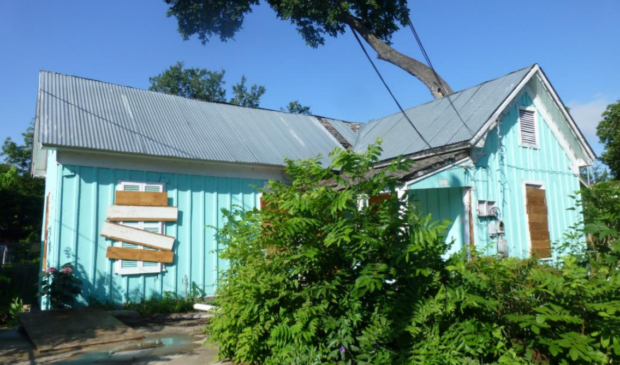Historic Herrera homestead heads to Council with Planning Commission approval
Tuesday, October 1, 2019 by
Jessi Devenyns It’s rare that a structure is zoned historic against an owner’s wishes. According to Preservation Austin, it has happened only three times since 1974; however, that number may be about to grow to four.
Following in the footsteps of the Historic Landmark Commission, which unanimously recommended the Herrera house at 1805 E. Third St. for historic zoning this summer, the Planning Commission unanimously recommended the home for historic zoning, with Commissioner Conor Kenny abstaining from the vote.
“It’s not often you bring us cases that are truly spectacular,” Commissioner Greg Anderson told city staff at the Sept. 24 meeting of the Historic Landmark Commission. The commissioners unanimously agreed that the impact and the prominence of the Herrera sisters, who grew up in the house, was worth commemorating for the Austin community.
Consuelo Herrera Mendez and her younger sister, Mary Grace Herrera, were the first two Hispanic teachers in the Austin Independent School District and were instrumental in desegregating the school system. Consuelo, the first Mexican American teacher in AISD, lived in the home until 1943. Mary Grace, who also taught for AISD, was a key witness in the 1973 federal desegregation trial for Austin-area schools. She lived in the home from childhood until her death in 1992. Their close relative Diana Herrera Castan͂eda also lived in the house from 1992 to 2016, during which time she was a prominent East Austin activist and the first Latina to be elected to the AISD school board.
“I think it would be a tragedy if we allowed the homestead of these three remarkable women to be demolished,” said Commissioner Patricia Seeger.
Commissioner Kenny, who abstained from the vote, agreed that the women who lived in the home were indisputably significant but since there was no engineering study, there was no way for the commissioners to understand whether the home was salvageable. Therefore, he reasoned, “I think that this commission is not in any way prepared or qualified to measure what kind of burden this is going to be on the owner.”
Deputy Preservation Officer Cara Bertron explained that not even staff members had received an engineering report of the property’s condition. However, it was her expert opinion as a preservationist that the home could be saved, though she was unable to guess the financial cost of doing so.
The builder on the project presented commissioners with an engineering review indicating that the house was in poor condition.
The case for the property originally materialized from a code citation that resulted in an application for demolition. Hector Avila, who was representing the property owner, told commissioners that the owner attempted to hire a builder, but he would not take the work because the house was not structurally sound.
To compromise, Avila offered to install a plaque on the new house commemorating the history of the site. If only the house is left with no context, he said, “nobody will know about the history in 40 years. It will just be a house.”
Members of the community, including Rosanna Cervantes, the daughter of Diana Herrera Castan͂eda, came to speak in favor of saving the home, saying that the three women’s contribution to the city could not be overstated and it was imperative that the home be left standing to commemorate them.
Bertron told commissioners that even if the original home was left standing with an 800-square-foot footprint, there was enough space on the property that code would allow for a 1,760-square-foot addition.
“I think it’s a common misperception that a historic designation means we freeze a property in time,” she said. “We have changes to historic landmarks all the time.”
With assurances that there was additional development potential on the property and the historical importance of the 100-year-old home, the commission passed its recommendation along to City Council to landmark the property.
As there is owner opposition to the historic zoning of the home, Council will need to approve the zoning change with a two-thirds supermajority vote of nine, instead of the typical six votes required to pass an item.
Cervantes was misty-eyed as she told the Austin Monitor that the commission’s recommendation was “bittersweet.” She said that while it was an important step, it was unfortunate that her mother and great-aunts were not around to see their work for the city’s educational system one step closer to being immortalized in the preservation of their home.
Photo courtesy of the city of Austin.
The Austin Monitor’s work is made possible by donations from the community. Though our reporting covers donors from time to time, we are careful to keep business and editorial efforts separate while maintaining transparency. A complete list of donors is available here, and our code of ethics is explained here.
You're a community leader
And we’re honored you look to us for serious, in-depth news. You know a strong community needs local and dedicated watchdog reporting. We’re here for you and that won’t change. Now will you take the powerful next step and support our nonprofit news organization?



